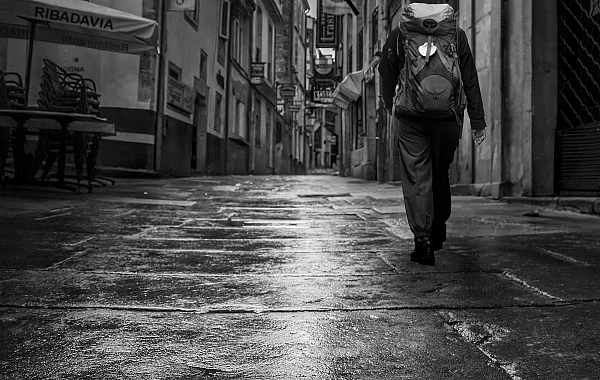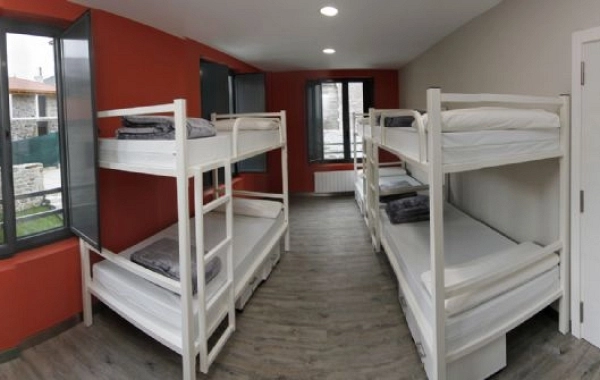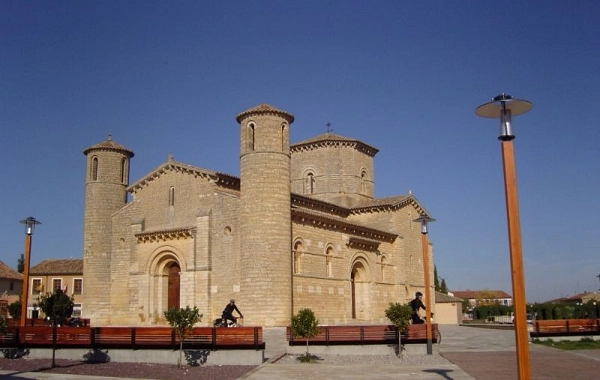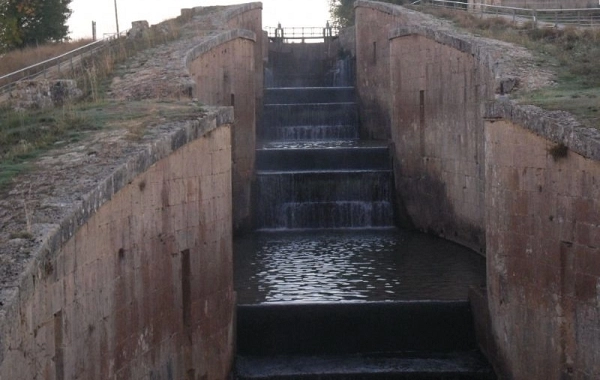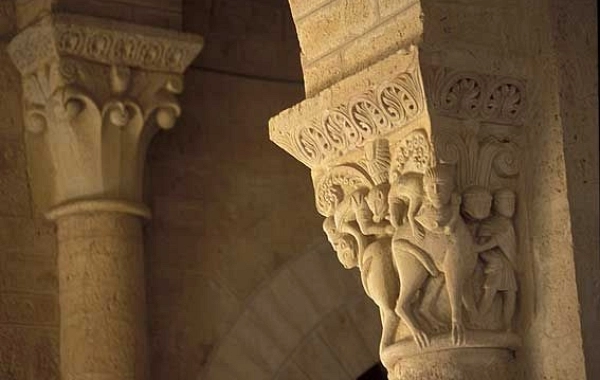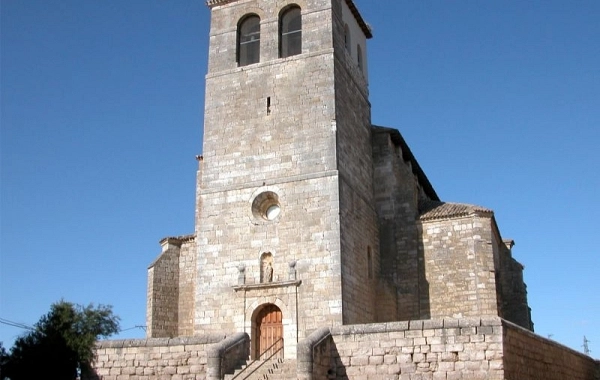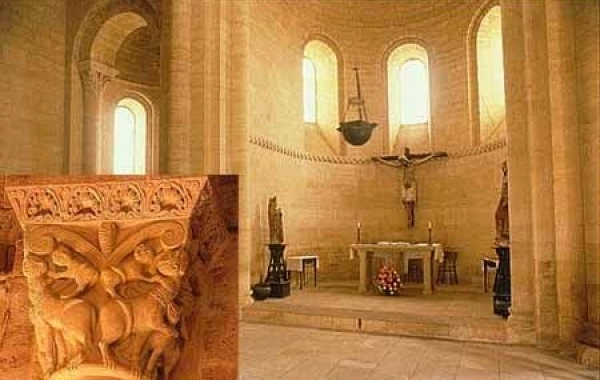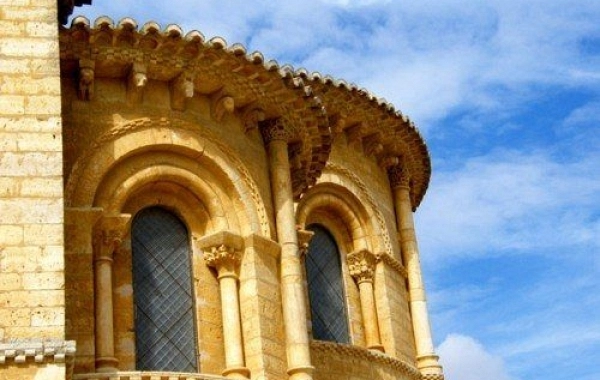CF16 - Castrojeriz - Frómista - 24,90 km
Distance25 Km.Related packages
Stage of the Camino de Santiago: From Castrojeriz to Frómista
Leaving Castrojeriz and the Odra River
The stage begins at the western end of Castrojeriz, passing through what was the San Miguel gate. From there, the Camino de Santiago descends towards the meadow of the Odra River, first crossing an ancient medieval bridge with more than twenty arches. Then, the river is crossed via a modern footbridge. Ahead looms the steep slope that leads to Alto de Mostelares, the main challenge of this stage.
The Ascent to Alto de Mostelares
The ascent to Alto de Mostelares is the only serious obstacle of the day. Although the slope is steep, it is recommended to take it slowly. Upon reaching the summit, pilgrims will enjoy spectacular views of the valley and surroundings, which make the effort of the climb worthwhile.
Descent towards the Pisuerga Meadow
From Alto de Mostelares, the Camino descends rapidly towards the meadow of the Pisuerga River. The descent is steep but short, and in less than a kilometre, pilgrims reach a large resting area by the river. Here, a panel informs us that we have arrived at the terminus of Itero del Castillo.
Itero del Castillo and the Fitero Bridge
The route continues along a local road, passing by the church of what was the hospital of San Nicolás (13th century), now converted into a hostel. A few metres away is the Fitero Bridge, a medieval structure rebuilt in the late 16th century due to the poor condition of the original. This construction, commissioned by Alfonso VI, crosses the Pisuerga, one of the most powerful rivers crossed by the French Camino.
The Chapel of Virgen de la Piedad and Itero de la Vega
After crossing the bridge, the Camino leaves the road and takes a dirt path that passes by the chapel of Virgen de la Piedad. Shortly after, pilgrims arrive in Itero de la Vega, the first village in the province of Palencia. After crossing a road, the Camino continues along a dirt path towards the next section.
The Pisuerga Canal and Itero's Wine Cellars
Before crossing the Pisuerga Canal, pilgrims pass by the traditional wine cellars of Itero, forming a small and picturesque settlement. The canal, built in 1932, is a key hydraulic work for the irrigation of cereals and beets. The Camino gently ascends the Otero Largo, a hill covered with small pines, as pilgrims approach Boadilla del Camino.
Boadilla del Camino and the Canal de Castilla Track
In Boadilla del Camino, pilgrims encounter the first pigeon lofts of the Tierra de Campos, a characteristic architectural feature of the region. After passing the village, the Camino joins the service track of the Canal de Castilla, following a route that passes by a stone-cutting shed.
Arrival in Frómista and the Lock Passage
Before arriving in Frómista, pilgrims must cross the Canal de Castilla via the passage of the four locks. This is a highlight of the stage, as the lock system is an important piece of hydraulic engineering in the region.
Conclusion: A Stage Rich in History and Nature
This stage of the Camino de Santiago, connecting Castrojeriz with Frómista, offers a mix of physical challenges, natural beauty, and significant historical landmarks. From the ascent to Alto de Mostelares to the passage over the Fitero Bridge and the Canal de Castilla, pilgrims enjoy a unique route on their way to Compostela. Without a doubt, a stage that combines the best of the French Camino: history, landscapes, and the Jacobean spirit.
Stages
- CF01 - Saint Jean de Pied de Port - Roncesvalles - 21 km
- CF02 - Roncesvalles - Zubiri - 22 km
- CF03 - Zubiri - Pamplona - 20 km
- CF04 - Pamplona - Puente la Reina - 19 km
- CF05 - Puente la Reina - Estella - 19,7 km
- CF06 - Estella - Los Arcos - 20,6 km
- CF07 - Los Arcos - Viana - 18 km
- CF08 - Viana - Navarrete - 22,3 km
- CF09 - Navarrete - Nájera - 16,9 km
- CF10 - Nájera - Santo Domingo de la Calzada - 21 km
- CF11 - Santo Domingo de la Calzada - Belorado - 22,7 km
- CF12 - Belorado - San Juan de Ortega - 24 km
- CF13 - San Juan de Ortega - Burgos - 27,6 km
- CF14 - Burgos - Hornillos del Camino - 18,3 km
- CF15 - Hornillos del Camino - Castrojeriz - 20,40 km
- CF16 - Castrojeriz - Frómista - 24,90 km
- CF17 - Frómista - Carrión de los Condes - 19,2 km
- CF18 - Carrión de los Condes - Lédigos - 23,40 km
- CF19 - Lédigos - Sahagún - 17,10 km
- CF20 - Sahagún - El Burgo Ranero - 17,9 km
- CF21 - El Burgo Ranero - Mansilla de las Mulas - 18,7 km
- CF22 - Mansilla de las Mulas - León - 18,4 km
- CF23 - León - Villadangos del Páramo - 21,8 km
- CF24 - Villadangos del Páramo - Astorga - 26 km
- CF25 - Astorga - Rabanal del Camino - 20,6 km
- CF26 - Rabanal del Camino - Molinaseca - 24,7 km
- CF27 - Molinaseca - Villafranca del Bierzo - 30,5 km
- CF28 - Villafranca del Bierzo - O Cebreiro - 30 km
- CF29 - O Cebreiro - Triacastela - 22,9 km
- CF30 - Triacastela - Sarria - 22 km
- CF31 - Sarria - Portomarín - 22 km
- CF32 - Portomarín - Palas del Rei - 23,9 km
- CF33 - Palas del Rei - Arzúa - 28,6 km
- CF34 - Arzúa - Santiago de Compostela - 38,4 km
- CF35 - O Pedrouzo - Santiago de Compostela - 20 km




